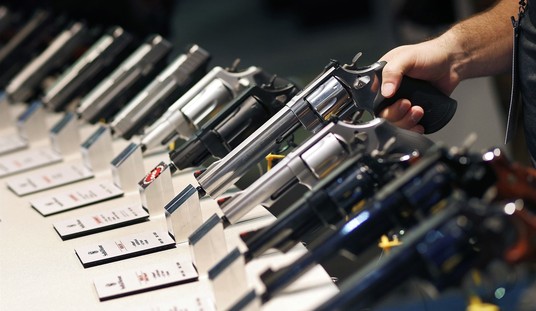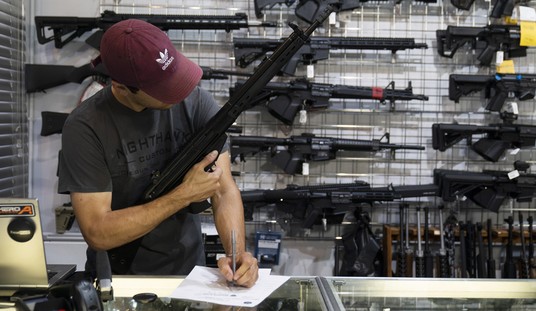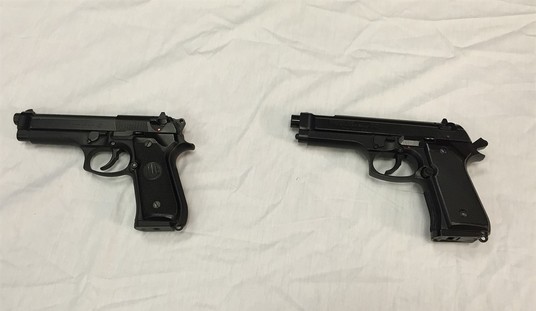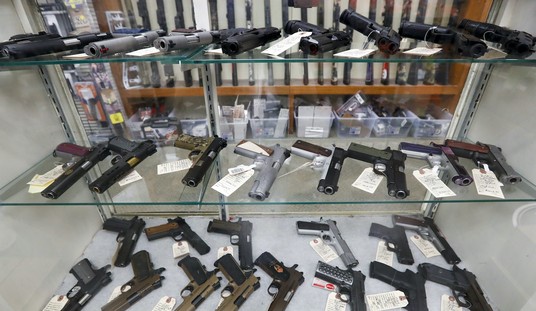The Force Science Institute recently conducted a major study on the performance of human memory under stress.
They took 64 Canadian police officers and split them into pairs, with one officer being designated as “active” participants responding to a scenario, and the other being assigned the role of an “observational” watcher. The active officer was to work through the scenario, while the observer was to passively watch the situation.
The scenario was carefully engineered to induce high levels of stress, getting as close as possible to the levels of stress an officer might encounter in a real-life situation.
Dave Spaulding notes the details of how the scenario was carried out:
…each pair watched a two-minute “briefing video,” purported to be cell phone footage taken in a college classroom. With a class in progress, a disgruntled student enters the room and engages the professor in an argument about poor grades. The perpetrator becomes increasingly agitated, draws a knife from his pocket, and takes the professor and another student hostage, while people flee from the scene.
Then from inside the “classroom,” each officer team, “dispatched” to the location, was exposed to the “experimental scenario,” lasting about four minutes. Standing side by side in designated positions, the officers initially are able to see the suspect threatening his hostages on “live” footage of the “on-going” incident from a closed-circuit TV camera trained on the hallway outside. Within seconds, the suspect bursts into the classroom, using a hostage as a shield and holding a knife to his captive’s neck.
After issuing various demands, he frees the hostage, throws the knife to the ground, and retreats back to the hallway. There, again visible on CCTV, he can be “seen tucking a gun into the waistband of his jeans.”
In a “final live interaction,” Hope writes, the suspect re-enters the classroom “in an agitated manner, goading the officers to shoot him.” At a point where he has turned his back on the officers, he suddenly spins around toward them with his hands moving toward his waistband and then his hands were suddenly thrust forward in a shooting position toward the officers. The gun, however, remains undrawn throughout. The assailant immediately pulled his hands into a hidden posture under his body as he fell.
The scenario ended once the Active Officer responded to this movement.
Note clearly: the suspect in this scenario had a handgun tucked into the from of his pants, and went through the motions of drawing and pointing an empty hand towards the officers before collapsing and covering up his hands again.
Here’s where things get really interesting.
After a 45-minute cool down period, both the active and observational officers were asked to describe what they went through in their own words, and then answer 94 questions. 14 of those questions were deemed to be of supreme importance, “about the perpetrator’s action, his weapon position, and officer response.”
Both observers and active participants consistently wrote similar accounts when asked to explain what happened in their own words, but often had very different accounts of what went happened in the critical seconds where the decision to shoot or not shot had to be made.
The average Active Officer dramatically trailed his Observer partner in accurately answering such questions as:
• What happened when the culprit turned towards you?
• Was there a weapon in his hand at this point?
• If yes, describe how he presented the weapon?
• Did the culprit discharge a weapon during the incident?
• What was the position of the culprit’s gun when he was impacted by round(s) from the officer? (Of Active Officers, 85% discharged their weapon during the scenario.)
• Where was the [suspect’s] gun at the end of the scenario?One particularly startling finding emerged from the researchers’ tally. Despite spinning and moving his hands in a provocative manner, the suspect kept his gun tucked in his waistband throughout. Yet, Hope writes, roughly 20 percent of the participants–Active Officers and Observers alike–“explicitly reported” that the suspect “pointed a weapon at them/in their direction in the final scene” of the scenario.
What is less certain is why 20 percent of the officers reported seeing a gun in the suspect’s hand, and further research is going to be needed to figure this out.
My hypothesis is a simple one: to survive a deadly force encounter, people must, at some point, jump from being reactive to proactive in the O.O.D.A. Loop. They must observe the actions of the perpetrator, orient themselves to possible threats, decide what action they must take, and then act. After observing enough sensory input to orient themselves, people must decide how they will act to possible actions a threat may make and get ahead of them, or they will never be able to resolve a situation successfully.
When an aggressor makes a motion that looks like he or she is reaching for a weapon and then pointing it at someone, the person under threat cannot reasonably be expected to wait for a volley of shots to be fired to respond. He must either take evasive action, or return fire. He must act on the suspect’s behavior, not on the actual discharge of a weapon. If he waits, he dies.
85-percent of the “active” officers fired at the suspect in the scenario, and were totally justified in doing so based on the shooter’s actions.
My hypothesis is that the human mind, overloaded with a hormone dump of adrenaline and other chemicals when the “fight or flight” response system kicked in, attempted to fill in gaps in memory or even rewrote memory with what the officers expected to see, instead of what the eyeballs actually recorded.
The same sort of false memories occur with eyewitnesses of all kinds, as is regularly born out in courts when an event with a dozen eyewitnesses with have a dozen different tales, almost all of which will differ in some significant detail from what video showed to take place.
One of the study’s author’s reasonably concludes:
“This study is added evidence that to expect an officer actively involved in a life-threatening encounter to resolve the action and completely grasp and later accurately describe in detail everything that happened may be expecting too much from the average human being.
“Investigators need to remember that an officer who misses or misstates information about an event that later becomes significant is not necessarily being deceptive or self-serving.”
This research will likely prove critical in understanding that regular citizens, law enforcement officers, and military servicemen recalling incidents cannot be expected to have “total recall” of a highly stressful event, even of key details.
Let that sit in the back of your mind the next time you hear competing claims of “what really happened.”









Join the conversation as a VIP Member